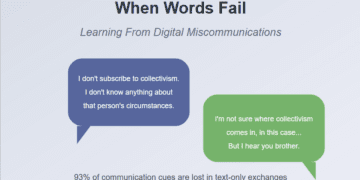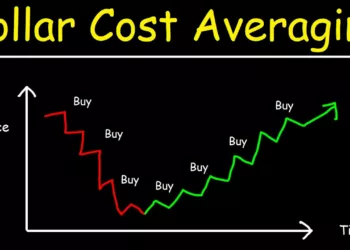Credit cards can be invaluable financial tools or dangerous debt traps depending on how responsibly they are used. With enticing rewards programs and convenient purchasing power, opening several accounts may seem appealing. However, credit cards demand careful planning and discipline to leverage their benefits without falling into excessive interest charges or credit damage. This comprehensive guide explores the nuances of owning multiple cards – analyzing the most effective strategies to maximize upside while minimizing downside risks.
Goldilocks and the Three Bears: What’s the “Just Right” Number of Credit Cards?
When working to optimize your credit card portfolio, the goal is finding the “Goldilocks Zone” – not too few cards forfeiting potential savings, not too many becoming unmanageable, but the just right number aligned to your unique needs and capabilities.
Our detailed research indicates three to four cards tends to be the optimal range for most consumers to maximize rewards while maintaining sound financial hygiene. With Americans holding 2.7 cards on average, a modest increase captures significant additional value often leaving hundreds of rewards dollars per year on the table.
Consumers reap the highest relative rewards velocity increase going from one card to three. However, continuing positive, albeit decelerating, return is achieved up to five cards before marginal benefit becomes negligible compared to complexity cost.
Ultimately the ideal number equates to that which you can personally stay organized across while also fully optimizing bonus categories that align to your actual spending patterns. The key is not forfeiting money on the table from under-diversification, while also not taking on impractical administrative overhead.
Core Benefits to Multiple Cards
- Earn More Rewards: With the average household spending $5k annually on groceries, $3k dining out, $2k gas, and thousands more across retailer categories – each dollar offers opportunities to earn cashback, airline miles and other perks. More cards means more bonus category coverage unlocking maximum rewards.
- Build Credit History: Having 3-4 active accounts demonstrates responsible management over longer history. This can bolster credit scores by over 30 points versus relying solely on a single card. Over a decade, higher scores could save tens of thousands in lower loan rates.
- Gain Financial Insights: Charging categories like grocery, dining, travel, etc. to specific cards allows for detailed spend tracking. Analyzing reports offers data-driven money management insights.
- Enhance Fraud Protection: In the event one card is compromised, you have backups allowing purchases to continue uninterrupted. Prevents late fees or penalty rates kicking in.
Key Risk Factors to Mitigate
While judicious users can realize significant benefit, employing multiple cards does intensify certain hazards. Proactively minimizing these downside risks is critical for sustained success:
Debt Pitfalls – Access to higher aggregate credit lines could facilitate overspending. Consistently making on-time payments in full prevents finance charges accruing.
Account Monitoring – More statement closing dates and minimums requires diligence to avoid late fees or credit damage. Mark calendars and enable text alerts.
Over-optimization – Chasing intro bonuses excessively drives hard credit inquiries lowering scores. Periodically pare back cards becoming obsolete.
Credit Limits – Total revolving credit below 30% of income helps utilization metrics. Ask issuers to reduce as needed to stay below threshold.
Tailoring Your Card Mix to Maximize Rewards
Optimizing credit card portfolios is similar to investment portfolio construction – smartly blending complementary options to achieve goals. The ideal mix likely includes:
1. Baseline Cashback Card – This is the core card for reliably earning 1-2% back on general everyday purchases. Top options include Citi® Double Cash, Wells Fargo Active Cash, Chase Freedom Unlimited.
2. Category Cashback Cards – These cards offer 5-6% rewards, but in rotating quarterly categories like grocery, dining, entertainment, etc. Popular picks include Discover It, Chase Freedom Flex, and U.S. Bank Cash+.
3. Custom Category Card – Issuers like Citi Custom Cash now allow selecting your own top spend category for fixed 5% earnings all year. Groceries, gas, dining all make savvy choices here.
4. Wildcard Airline or Hotel Card – These tie points earning to specific loyalty programs aligned to your favorite travel provider. Perks like free checked baggage or annual hotel nights provide additional value.
Critical Habits for Maintaining Management
While more cards can intensify risks, adhering to sound financial habits minimizes the potential downsides:
- Maintain budgets tracking all incomes and spending
- Automate balance payments in full each month
- Use different cards for common categories to simplify expense management
- Check statements weekly, never missing due dates
- Analyze rewards reports and adjust category assignments quarterly for optimal acceleration
The key is not foregoing useful financial tools, but rather using them judiciously through disciplined tracking and planning. Employed conscientiously, multiple cards provide consumers more control over their financial trajectories.
It’s All About Balance
Maintaining a diversified credit card portfolio provides consumers both financial upside and downside hazards. Much like an investment portfolio, curating the right mix unlocks amplified savings, rewards and protections. However, the incremental accounts and available balances require careful tracking and discipline to prevent unintended interest pitfalls. While more cards have the potential to build financial flexibility and control, finding the Goldilocks zone for your unique needs and situation is imperative to sustainably maximize the benefit over the long-haul.
Hopefully this thorough guide to balancing multiple credit cards effectively proves helpful at unlocking enhanced money management and savings. Please share any other questions or insights on what has or hasn’t worked in your experience in the comments section below!
For more content, check out the following:
- The Benefits and Drawbacks of Paying with Cash vs. Credit Card: Which Should You Choose?
- Unleashing the Power of Credit: From Rock Bottom to Sky-High Success
- The Complete Guide to Personal Finance: In-Depth Answers to Your Credit and Debt Questions
Affiliate Links:
Also checkout Ask Sebby youtube channel.
















































